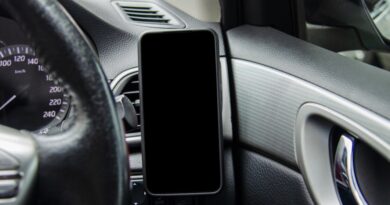Stellantis worker’s idea leads to hazard alerts in 1.8M vehicles
More than 1.8 million Chrysler, Dodge, Jeep and Ram vehicles now alert drivers in the U.S. and Canada of nearby firetrucks, ambulances and road hazards through their Uconnect infotainment system.
The idea for the feature came from a hearing-impaired Stellantis employee who nearly collided with an emergency vehicle she couldn’t hear. The employee in 2021 suggested driver notifications to help avoid such calamities, and Stellantis deployed the Emergency Vehicle Alert System from HAAS Alert that it began rolling out last year.
An over-the-air update added the system to vehicles starting with the 2018 model year. The notifications come from HAAS Alert’s Safety Cloud platform, a vehicle- to-everything and digital alerting solution used by thousands of public and private roadway fleets in North America.
The alerts demonstrate two of the goals Stellantis wants to achieve with software: continuously improving vehicles and using vehicles to create conveniences for customers, said Yves Bonnefont, chief software officer for Stellantis.
“This idea of software bringing you convenience, making your vehicle experience better, is also at the core of what we want to do,” Bonnefont told Automotive News. “And it can be in the field of safety, can be in the field of infotainment, can be in the field of comfort, can be in the field of going off road if you have a Jeep, going on a track if you have a Dodge. All those things that help you get more out of your vehicle thanks to software is exactly where we want to go.”
Stellantis has been fostering a culture of innovation through efforts such as Star*Up, an internal competition in which employees around the world present their ideas. The hearing-impaired worker who narrowly avoided a crash shared her idea for hazard notifications during Star*Up, which drove Stellantis to adopt the HAAS Alert system.
The automaker first tested the warnings without sound, then added beeps to grab a driver’s attention based on customer feedback. The HAAS Alert team worked with Stellantis on-site during the early testing rounds.
Trpko Blazevski, Stellantis’ manager of global innovation and digital partnerships, said the architecture of the automaker’s vehicles allowed it to seamlessly push the over-the-air update. The idea for the alerts “really hit our heartstrings,” he said.
“We said we need to implement this. We need to do something for our customers,” Blazevski said. “So we did that very quickly to deliver this. It was key and critical based on her experience that this can’t be model year ’24. We have to go back as far as we can and make this available to our existing customers that have our vehicles on the road today.”
Blazevski said the warnings are triggered when an emergency vehicle has its lights or siren on. Drivers zipping down the highway won’t be alerted to a police vehicle simply parked on the side of the road.
Vehicle fleets relay warnings to Stellantis vehicles through the HAAS Alert transponder device.
“We’re actually starting to make a pretty big push into road construction and work zones,” said Jeremy Agulnek, HAAS Alert’s senior vice president of connected vehicles. “There’s a big emphasis on work zone safety nationally, so we’re really trying to just get the word out.”
Stellantis is looking to expand the alerts by adding disabled vehicles to the list of hazards drivers can be notified of. The Hazard Enhanced Location Protocol feature, or HELP, comes from Emergency Safety Solutions Inc. and uses the HAAS Alert Safety Cloud.
Stellantis said it gives 15 to 20 seconds of warning that a disabled vehicle is ahead, which means motorists would be notified about a quarter mile away when driving at highway speed.
HELP-equipped vehicles with LED lighting can be programmed to flash the hazard warning lights and other exterior lamps at a scientifically tuned rate and pattern to better grab the attention of drivers.
HELP is still in the evaluation phase. Stellantis will be deciding whether to move forward with it in three to six months, said Mamatha Chamarthi, the automaker’s head of global software business management.
“It is very promising because usually when vehicles are disabled and it’s dark, you really don’t notice the vehicles,” Chamarthi said. “That’s why we thought it would be a good feature to introduce.”
Source : Autonews.com




